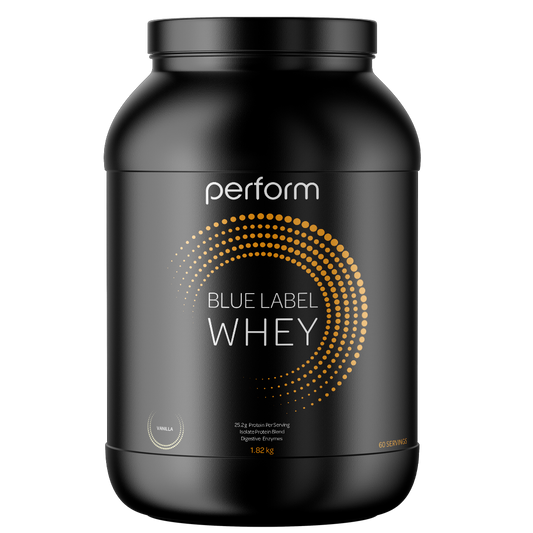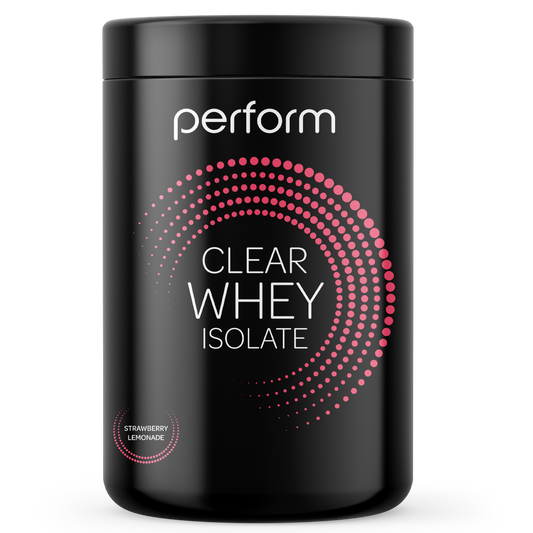What You Need To Know About Vitamin C – The Benefits, Signs of Deficiency And Sources
Vitamin C is a water-soluble vitamin that must be consumed from the diet or supplements. It has numerous roles within the body and has been linked to various health benefits such as increasing antioxidant levels, iron absorption and immunity, as well as decreasing blood pressure and inflammation. It may also help prevent acute respiratory infections, particularly in individuals with malnutrition and those who are physically stressed.
In this article you can find:
- What is vitamin C?
- Types of vitamin C
- What are the benefits of vitamin C?
- What are the signs and symptoms of deficiency?
- Who is at risk of deficiency?
- Sources of vitamin C and recommended dose
What is Vitamin C?
Vitamin C (also known as L-ascorbic acid, ascorbic acid, or L-ascorbate) is a unique nutrient because it also functions as a powerful anti-oxidant that protects your cells against potential damage (4). It is a water-soluble vitamin, meaning that it is carried to the body’s tissues but not stored in the body, unlike fat-soluble vitamins which is stored in the body’s fatty tissue. As a result, humans need to obtain vitamin C daily in order to maintain adequate levels for proper bodily function.
Types of Vitamin C
Vitamin C is found in many fruits and vegetables. Supplements generally contain vitamin C in the form of ascorbic acid, which has equivalent bioavailability to that of naturally occurring ascorbic acid in foods (1). Other types of vitamin C supplements include mineral ascorbates (sodium ascorbate, calcium ascorbate, etc.), ascorbic acid with bioflavonoids, time-release vitamin C and combination products such as Ester-C® (3). Mineral ascorbates are gentler forms of vitamin C that are better tolerated by the gut. This form of vitamin C is recommended for those who find regular ascorbic acid too acidic. Ascorbic acid with bioflavonoids delivers extra immune benefits and maybe help to increase bioavailability. Time-release vitamin C refers to a formula that involves taking multiple tablets throughout the day. Consuming smaller doses of vitamin C throughout the day can also increase its bioavailability. Ester-C® is a new form of buffered vitamin C which contains mineral ascorbate (generally calcium ascorbate), dehydroascorbate, calcium threonate, xylnate and lyxonate. It has been shown to be well absorbed and tolerated in the gut like other mineral ascorbates.
What are the Benefits Vitamin C?
Vitamin C plays a critical role in some of the body’s most vital functions. Below are some of the many benefits vitamin C can have on the body.
Fights inflammation
Studies suggest that vitamin C can increase your blood antioxidant levels by up to 30% (5). Antioxidants are molecules that support the immune system by protecting cells from free radicals. Free radicals are also molecules that support the immune system as they are used by the body’s cells to kill invading bacteria. However, many radicals are unstable and highly reactive which allows them to engage in unnecessary side reactions. This results in cellular impairment and eventually cellular injury when they are present in disproportionate amounts. This can promote a state known as oxidative stress, which has been linked to many chronic diseases (6). Antioxidants has the ability to stabilize free-radicals, acting as a natural “switch-off”, stopping the free-radicals from causing unnecessary harm.
Blood pressure
Vitamin C may help reduce blood pressure in individuals with and without high blood pressure. This may be as a result of its ability to help relax the blood vessels that carry blood from the heart (7). However, it is not yet clear whether the vitamins effect on blood pressure is long term.
Heart disease
Vitamin C may reduce the risk of heart disease by decreasing LDL (bad) cholesterol levels in the blood, as well as blood triglycerides (type of fat found in the blood). High LDL cholesterol and triglyceride levels can contribute to the hardening of the arteries or thickening of the artery walls (arteriosclerosis) which increases the risk of stroke, heart attack and heart disease.
Iron deficiency
Iron is an important mineral that the body needs for growth and development. The body utilises iron to produce hemoglobin (a protein in red blood cells that transports oxygen from the lungs to all parts of the body) and myoglobin (a protein that administers oxygen to the muscles). Vitamin C can aid the absorption of iron from the diet by assisting to convert the iron that is poorly absorbed, such as iron from meat-free sources. Consuming 100mg of vitamin C can enhance iron absorption by 67% (8).
Immunity
As well as increasing blood antioxidant levels, vitamin C plays a part in many other areas of the immune system. It encourages the production of white blood cells (lymphocytes and phagocytes) which help the body fight against infection and disease. Individuals with adequate levels of vitamin C are thought to be better able to fight off infections compared to those who are deficient. It has also been found to lower blood levels of histamine, a compound which is released by cells in response to injury and in allergic and inflammatory reactions, causing contraction of smooth muscle and dilation of capillaries (9).
Skin health and collagen
Vitamin C can also help maintain skin health by promoting the differentiation of keratinocytes (the major cell type of the epidermis – the outermost of the layers of the skin) and decreasing melanin synthesis, resulting in antioxidant protection against UV-induced photodamage. It also assists in collagen production, a vital component of the skin being that it is the main component of the connective tissue, as well as other fibrous tissues such as tendons, ligaments, cornea, cartilage, bones, the gut and blood vessels. Researchers suggest that wounds, cuts and grazes may heal quicker in individuals who consume a high amount of vitamin C as a result (10).
Respiratory infections
Recent evidence from systematic reviews illustrate that oral intake of vitamin C may assist with symptoms of acute viral respiratory infections by reducing fever and chills, relieving chest pain and assisting in reducing symptoms of common cold-induced asthma (11).
What are the signs and symptoms of deficiency?
- Rough, bumpy skin
- Corkscrew-shaped body hair
- Bright red hair follicles
- Spoon-shaped fingernails with red spots or lines
- Dry skin
- Bruising easily
- Slowly healing wounds
- Painful/swollen joints
- Weak bones
- Bleeding gums and tooth loss
- Poor immunity
- Iron deficiency
- Fatigue
- Chronic inflammation
Prolonged vitamin C deficiency is known as scurvy and is potentially fatal if left untreated (1).
Who is at Risk of Deficiency?
- Smokers and passive smokers (smokers will have higher levels of oxidative stress). It is recommended that smokers consume an extra 35mg of vitamin-C in comparison to individuals who do not smoke (1)
- Individuals who drink an excessive amount of alcohol
- Individuals with limited food variety
- Individuals with malabsorption, certain chronic diseases (such as kidney disease) and those who take certain medication
Sources of Vitamin C and Recommended Dose
Fruit and vegetables are the best sources of vitamin C. Cooking and prolonged storage can reduce a lot of the vitamin C content in foods because the vitamin is water-soluble and is destroyed by heat.
Food sources of vitamin C include:
- Citrus fruits
- Tomatoes and tomato juice
- Red and green peppers
- Kiwifruit
- Broccoli
- Strawberries
- Brussel sprouts
- Cantaloupe
- Fortified breakfast cereals
- Cabbage
- Cauliflower
Supplemental sources of vitamin C include:
- Ascorbic acid
- Ascorbic acid with bioflavonoids
- Mineral ascorbates
- Time-release vitamin C
- Combination products e.g. Ester-C®
Recommended dose:
Adults need at least 40mg of vitamin C a day (2). The recommended daily intake (RDI) is 90 mg for men and 75 mg for women (12). The body uses extra vitamin C during times of increased need such as times of chronic stress, illness and infection, as well as time of high pollution exposure. Unless extra care is taken to increase dietary intake during these times, daily supplies are likely to fall short. This is when supplemental vitamin C may be a useful addition to your diet. Taking too much vitamin C can cause stomach pain, diarrhea and flatulence (a buildup of gas in the digestive system that can lead to abdominal discomfort). Taking 1000mg or less a day of vitamin C supplements is unlikely to cause any harm (2).
References
- od.nih.gov. 2020. Office Of Dietary Supplements - Vitamin C. [online] Available at: <https://ods.od.nih.gov/factsheets/VitaminC-HealthProfessional/> [Accessed 15 November 2020].
- ie. 2020. Introduction - HSE.Ie. [online] Available at: <https://www.hse.ie/eng/health/az/v/vitamins,-minerals-and-supplements/> [Accessed 15 November 2020].
- Johnston CS, Luo B. Comparison of the absorption and excretion of three commercially available sources of vitamin C. J Am Diet Assoc 1994;94:779-81.
- Alessio, H., Goldfarb, A. and Cao, G., 1997. Exercise-Induced Oxidative Stress before and after Vitamin C Supplementation. International Journal of Sport Nutrition, 7(1), pp.1-9.
- Kim, M., Sasazuki, S., Sasaki, S., Okubo, S., Hayashi, M. and Tsugane, S., 2003. Effect of Five-Year Supplementation of Vitamin C on Serum Vitamin C Concentration and Consumption of Vegetables and Fruits in Middle-Aged Japanese: A Randomized Controlled Trial. Journal of the American College of Nutrition, 22(3), pp.208-216.
- Pham-Huy LA, He H, Pham-Huy C. Free radicals, antioxidants in disease and health. Int J Biomed Sci. 2008 Jun;4(2):89-96. PMID: 23675073; PMCID: PMC3614697.
- Ettarh RR, Odigie IP, Adigun SA. Vitamin C lowers blood pressure and alters vascular responsiveness in salt-induced hypertension. Can J Physiol Pharmacol. 2002 Dec;80(12):1199-202. doi: 10.1139/y02-147. PMID: 12564647.
- Hallberg L, Hulthén L. Prediction of dietary iron absorption: an algorithm for calculating absorption and bioavailability of dietary iron. Am J Clin Nutr. 2000 May;71(5):1147-60. doi: 10.1093/ajcn/71.5.1147. Erratum in: Am J Clin Nutr 2000 Nov;72(5):1242. Erratum in: Am J Clin Nutr 2001 Aug;74(2):274. Erratum in: Am J Clin Nutr. 2006 Nov;84(5):1253. PMID: 10799377.
- Johnston CS, Martin LJ, Cai X. Antihistamine effect of supplemental ascorbic acid and neutrophil chemotaxis. J Am Coll Nutr. 1992 Apr;11(2):172-6. PMID: 1578094.
- Molnar JA, Underdown MJ, Clark WA. Nutrition and Chronic Wounds. Adv Wound Care (New Rochelle). 2014;3(11):663-681. doi:10.1089/wound.2014.0530
- Schloss, J., Lauche, R., Harnett, J., Hannan, N., Brown, D., Greenfield, T. and Steel, A., 2020. Efficacy and safety of vitamin C in the management of acute respiratory infection and disease: A rapid review. Advances in Integrative Medicine, 7(4), pp.187-191.
- Jacob RA, Sotoudeh G. Vitamin C function and status in chronic disease. Nutr Clin Care. 2002 Mar-Apr;5(2):66-74. doi: 10.1046/j.1523-5408.2002.00005.x. PMID: 12134712.





